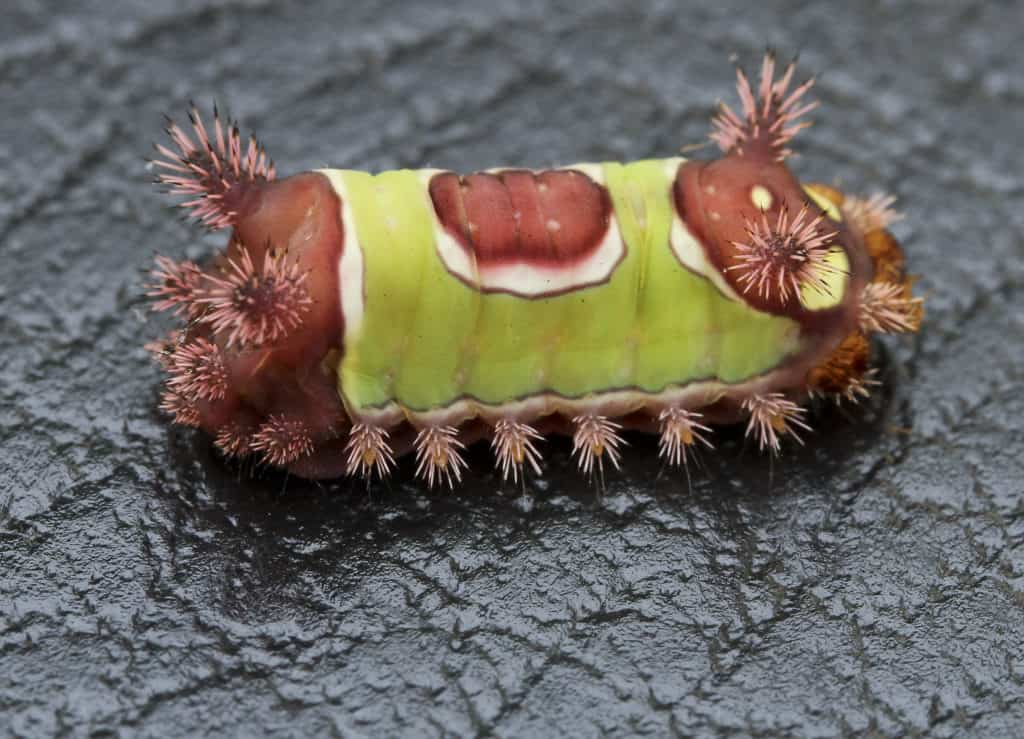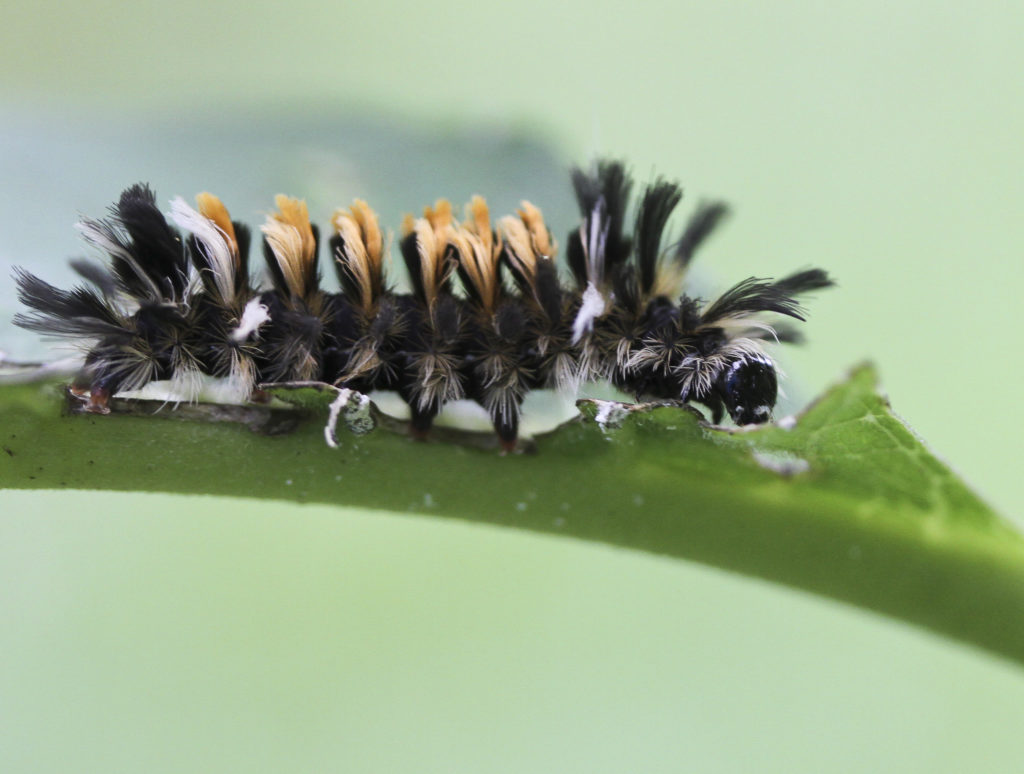Stinging Caterpillars

By Wayne Bierbaum
As I was pulling weeds from around some sedum plants, I noticed a very interesting colorful caterpillar attached to a leaf. It had obvious spines and projections that elevated the spines away from its body. I was lucky that there was only one of those bugs and that I had avoided touching it. It was one of the few poisonous caterpillars in Maryland, a saddleback caterpillar.
The saddleback and the puss caterpillars are the top two most poisonous caterpillars in North America. They each have poison glands located at the base of sharp spines. If you are lucky, the spine stabs you and you get a small amount of the painful toxin, but in some instances, the spine and the poison gland break off in your skin and continues to be an irritant for days.
The spines are urticating hairs, which means they have tiny barbs pointed away from the tip so they can work their way deeper into the skin. The puss caterpillar’s poison is very painful and causes swelling and redness for several hours. Severe poisonings can lead to a drop in blood pressure, tachycardia, abdominal pain, and even seizures.
The puss moth caterpillar is also known as the asp caterpillar. It is very hairy with a Joe Dirt-like mullet but hidden in the brown hair are the vertical poison spines. There are reports of rare deaths from seizures, renal failure, and secondary infections causing septic shock.
The saddleback caterpillar can also cause nausea and headache but not as severely as the puss caterpillar. There are no reports of deaths that I could find.
There are at least two other caterpillars with urticating hairs with a milder but still irritating poison: the tussock moth and the American dagger moth caterpillars. Both of these caterpillars have fluffy hair with symmetric patches of firmer urticating hairs. The tussock moth caterpillar is very common and is fairly attractive with a black and white design with stiff tufts of either yellow or black. The American dagger moth caterpillars are fluffy and yellow with brighter stiff hairs down the back. Both of these caterpillars cause severe irritation that lasts as long as the hairs stay in the skin. They are fairly active caterpillars and are commonly seen going from one food source to another. Children are attracted to these innocent appearing bugs and are most often the stinging victims.
All of the mentioned caterpillars, especially the saddleback, feed on multiple species of plants. They all overwinter as pupae and are largest in size and number in autumn.
The best way to remove the spines from someone’s skin is to press tape on the skin while applying lateral traction. Pull the tape slightly to the side while pressing it on to get the hair to lie down as they get stuck to the tape.
These are fascinating creatures to observe but from a distance. If you aren’t sure if it’s a stinging caterpillar, it’s best to keep your hands to yourself.

